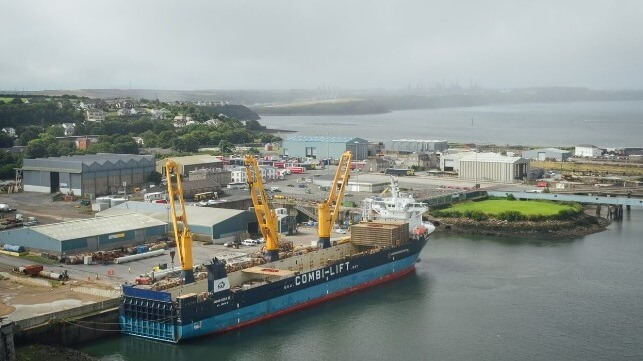Private Investors Pump $1.3 Billion Into UK Ports

The United Kingdom's ports have defied COVID-19 disruption to maintain a growth trajectory in attracting investments, despite the impact of COVID-19 and Brexit disruption. The British Ports Association (BPA) says the country's ports attracted investments to the tune of $1.3 billion in 2021, up from $809.5 million in 2020.
The biggest component was a new plan announced by DP World to invest $404.7 million to set up a new berth at its London Gateway terminal. The fourth berth will raise the capacity of the container port by a third and enable it to accommodate the world's largest vessels. Its opening will coincide with the delivery of a new wave of 24,000 TEUs vessels that will operate between Asia and Europe.
Other notable port infrastructure investments announced last year include the start of a new $80.9 million work program to redevelop areas within Pembroke Port, a $67.4 million expansion at the Port of Cromarty Firth, $54 million of investment in the Port of Leith by Forth Ports, $33.7 million development of the Port of Lowestoft's eastern energy facility and Teesport's new $12.4 million bulks terminal.
"We are pleased to see surging investment in UK ports across a wide variety of sectors, from containers to offshore energy. Ports remain attractive to investors as a well-managed industry with strong long-term growth prospects," said Mark Simmonds, BPA Director of Policy.
He added that the investments are spread widely with container ports, offshore energy, and cruise terminals all attracting significant private capital, underlining strong confidence in the sector and its potential for growth.
The surge in investments comes at a time when UK ports are bouncing back from the pandemic inflicted slump in throughput, although there remains significant volatility. "Ports remain busy but in many cases are dealing with unprecedented volumes. We expect this to continue throughout 2022," Simmonds said.
In 2020, when UK ports attracted $809.5 million of investments, the most significant project was the Harwich Haven's $162 million channel deepening at the Port of Felixstowe. The channel deepening means that the biggest container ships in the world will be able to access Felixstowe, which handles over a third of the UK's containers.
UK ports handle nearly 500 million tonnes of cargo every year, covering 95 percent of the country's international trade. The country's port volumes recorded an unprecedented 17 percent decline in 2020, primarily caused by a 20 percent drop in inward cargo volumes as the global pandemic struck. As an import-driven economy, inbound cargo accounts for 60 percent of overall port volumes.
According to BPA data, cargo volumes have returned to pre-pandemic levels, with container volume increasing by four percent in the third quarter of 2021 compared to the same period in 2019, while breakbulk rose by 18 percent and dry bulk by five percent. Ro-Ro volumes remained flat while liquid bulk declined by 13 percent. Liquid bulk accounts for around 40 percent of UK port tonnages, and five ports handle 60 percent of the country's liquid bulk cargoes.

that matters most
Get the latest maritime news delivered to your inbox daily.
"Removing liquid bulk from the statistics reveals that the volume of other combined cargo types, including containers, timber, and steel, looks set to be at its highest for the last four years," said a BPA working paper on the impact of the pandemic on UK ports.
This year, as Brexit takes full effect, the UK government is implementing tough border control measures on goods coming from the EU. To enable seamless implementation come July, the government, through the $270 million Port Infrastructure Fund, is providing one-off grants to more than 40 ports to build facilities required for additional border controls on goods traded with the EU.
